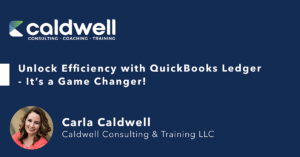Your accounting firm is not just an accounting firm. It is your business. Just like you give your business-owner clients the tools they need to thrive in the form of financial statements and other analytical information, you need to do the same for your firm. With changes in the industry, technology and in our clients’ businesses, we can no longer be the “shoemakers that have no shoes” by not spending time analyzing our own firms. Having a firm retreat is an effective way to focus on your accounting firm business growth, processes and opportunities.

Here are some specifics that may help you determine not only how to do a firm retreat, but some logistics to make it successful.
Why have a firm retreat?
Large corporations have used retreats for years for one simple reason: they work. Retreats reveal your team’s weaknesses and strengths. Retreats provide focused time to develop SMART goals. Spending time together in a fresh setting can bond your team together and lead to a renewed passion for the firm and work you do, which spills over into serving your clients with excellence.
What is a firm retreat?
A firm retreat is an intentional, concentrated time away from the office and normal schedule specifically to focus on your business. Your firm retreat can be as short as half a day or as long as several days. It really depends on the size of your firm, the number of partners, and the frequency you plan the retreats.
Plan the Firm Retreat
When planning a firm retreat, first decide the goal of the retreat. It could be a debrief after tax season, after a big system implementation, an annual planning meeting or even for team building prior to a major initiative rollout. Whatever the goal, be sure to make it clear and positive so that everyone will look forward to the time away.
Next, determine who will go to the retreat. Again, this depends on the size of the firm – some firms choose just their leadership team, some choose just partners, some choose everyone, and some have a hybrid, where the leadership/partners get away a bit beforehand and then the rest of the team arrives. Many times, there are educational sessions to meet some of the CPE requirements. Again, defining the goal will assist in aligning what is done at the retreat.
It is also important to have someone to facilitate the retreat and sometimes even assist in planning the retreat. An outside facilitator can bring ideas and expertise that provide insight into various aspects of the firm’s growth. They can lead some of the discussions and, depending on the facilitator, bring insight from the accounting industry and help with business planning. An outside facilitator relieves you of the burden of being the boss and frees you up to participate in the discussion without squelching the ideas of those around you. Even if you do not think you are intimidating, your position as a boss or a partner in the firm automatically makes you intimidating to some. A facilitator’s leadership can assure the team that all voices will be heard and all are encouraged to share equally.
As the event gets closer, be sure to send out an agenda and even a survey to get the participants’ minds thinking about the topics that will be discussed. With various personalities, some want time to prepare and think through potential ideas, recap opportunities that have come up, and shift to “big idea” thinking from being in the trenches day to day.
At the Firm Retreat
The firm leader needs to start the meeting, and thank everyone for coming, acknowledging the sacrifice it took to get away (especially for multi-day retreats). Remind them of the purpose of the retreat, and make it clear that you are here to participate with them. Your opening statement sets the tone of cooperation and gives freedom for the team to make suggestions without fear of career repercussions.
If you are using a facilitator, introduce them and explain their role, and yours. It will be hard as the leader to not interject often, but be sure to give others a chance to share. The sequence of the session is also important, as you may find that you need to save controversial or emotional topics to a time after some team building has happened. Be sure to also include free time in the schedule, as introverts need free time so they can rest from the intensity of group time. Free time also allows the team to connect in new ways through activities or just through chatting without the same time constraints that exist in the day-to-day.
Be sure to include a record-keeper to keep track of the key points of discussion. You will want to return to these thoughts later. Depending on the structure of your retreat, it may need to be a few people. It may also help to video record the sessions as well, especially if key people are somehow not able to attend.
Finally, plan for proper follow up so what is decided on during the retreat is put into action.
All too often firm retreats generate tons of ideas and then a plan is not enacted to implement the changes or ideas, and participants feel it was a waste of time. Take action, and also plan for communicating the changes with those who were not able to come to the retreat. This is critical and will make a difference in planning your next retreat.
You are a business owner not just an accountant.
The time you pour into planning and conducting your firm retreat will pay great dividends when you return to the office!
Questions? Contact Carla Caldwell today!




